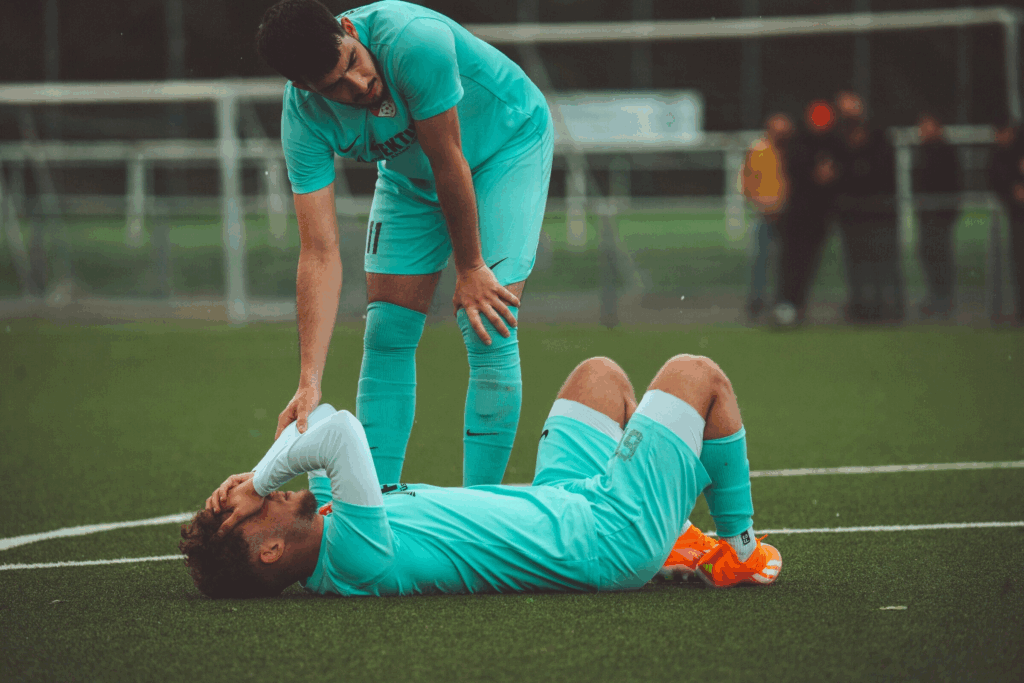What does the research say? (Part 3 here)
In Part 1 we talked about why strength is underrated in soccer, how it can improve speed without extra conditioning, and the pitfall of focusing on “fitness” to the exclusion of other physical training.
Now we’re going to dig a little deeper into how strength training changes maximal aerobic speed (MAS) and VO₂ max. If you’re a soccer coach who wants to help their players get faster, we are now setting the stage for training guidelines.
Recap: The two pillars of endurance
Aerobic performance rides on two key traits: VO₂ max (engine size) and MAS (how fast that engine moves you). VO₂ max gets the headlines, but MAS is the “missing ingredient” many coaches overlook.
Your MAS is determined by how much capacity you have divided by how much oxygen it costs you to move. Great VO₂ capacity but costly movement means you don’t get good bang for your buck. You may still perform well, but there’s a higher risk of injury from weak joint stabilizers and you are more prone to fatigue. You also have a harder time recovering from impact and wear.

On the other hand, if you have low cost movement then you can get more speed “more cheaply” than your opponent. This means you can make the best use out of whatever engine you have at the moment. Although endurance training is the primary driver of VO₂ max itself, strength work can meaningfully influence the speed that any certain VO₂ max can support.
2. What the research says about VO₂ max
| Finding | Typical change | Key evidence |
| Heavy or explosive strength alone rarely raises mass-specific VO₂ max | Trivial to small (≤ 2 %) | Meta-analysis of 45 concurrent‐training trials in trained adults – changes explained almost entirely by the endurance dose, not the strength dose frontiersin.org |
| Absolute VO₂ max can rise when fat-free mass grows | ~2–4 % | Same analyses note small absolute gains in cohorts that gained lean mass, but no change per kg body mass frontiersin.org |
| Respiratory-muscle strength training (IMT) can lift VO₂ max marginally | ~3 – 5 % in sub-elite runners | 6-week IMT raised inspiratory pressure, delayed ventilatory fatigue and increased VO₂ max by 4 % in amateur runners pmc.ncbi.nlm.nih.gov |
Take-home: If your biggest goal is pure endurance capacity, you’re still going to need hefty mileage. Strength work is not a substitute for high-volume or high-intensity endurance training if the goal is to push VO₂ max upward.
However, as mentioned in part 1 of this series, that’s only half the story and many developing players are actually limited by their weakness and lack of power. Additionally, you can only crank the mileage so much before problems appear, especially for younger players.
Overuse of endurance training is the single biggest contributor to chronic injury, so-called “central fatigue” or burnout, and systemic overtraining. Not strength training – endurance work. There’s good evidence in the literature for it too, but that’s a topic for another time.
3. Strength training and maximal aerobic speed (MAS)
Heavy resistance and plyometric programs consistently raise MAS even when VO₂ max is unchanged. Mechanisms center on reduced oxygen cost per stride (or per revolution for cycling).
| Intervention | Cohort | Change in 1 RM / RFD | Change in economy | Change in MAS / time-to-exhaustion |
| 8 weeks half-squat, 4×4 @ 85–90 % 1 RM, 3× wk | National-level distance runners | +33 % 1 RM, +26 % RFD | –5 % O₂ cost | +21 % time to exhaustion at MAS, MAS ↑ |
| Same protocol in competitive road cyclists | Road cyclists | +12 % 1 RM | –4 % O₂ cost | +17 % time to exhaustion at maximal aerobic power |
| Systematic review of 27 trials (strength ± plyometrics) | Trained middle/long-distance runners | — | Standardized Δ RE = –1.4 SD | Average vVO₂ max ↑ 3–5 % |
The results are mind-blowing when you think about them – not only do you decrease the oxygen cost significantly (-5% is actually a huge reduction), but you also increase the power of each stride to cover more ground. It’s “cheaper for more”.
What I like about these studies is that they were done in highly trained, pure endurance athletes. One would expect that if any group of people were to show limitations in strength training benefits, it would be already highly trained runners and cyclists who are pure aerobic capacity specialists. We actually see the opposite – getting a 20% increase in endurance at max power is ridiculous.
That type of improvement could change a match result by itself. When you consider how time consuming endurance training vs strength training is at the elite running level, it’s a no brainer. Massive bang for very few bucks spent in time.
4. How strength reshapes aerobic performance physiology
Below are what I view as the 4 primary physical changes that drive performance. This may be a little too far down the rabbit hole for some folks, and that’s fine. If that’s you, go ahead and skip this table for the take home message – but I think this table is useful to relate different physiological aspects of endurance training to game day effectiveness.
| Layer | Adaptation from strength work | Effect on VO₂ max | Effect on MAS |
| Central delivery | Larger stroke volume stimulus is limited; however, stronger inspiratory/expiratory muscles lower breathing work. | Minimal ↑ or unchanged VO₂ max | Small MAS benefit from delayed ventilatory fatigue. pmc.ncbi.nlm.nih.gov |
| Peripheral utilization | Full motor-unit recruitment and high intramuscular tensions → shift of IIx→IIa, ↑ capillarization. | No direct VO₂ max gain | ↑ LT & MAS via better local oxygen extraction. pmc.ncbi.nlm.nih.gov |
| Neuromechanical efficiency | ↑ Tendon stiffness, ↑ rate-of-force development, ↓ co-contraction. | — | Lower O₂ cost => higher MAS. pubmed.ncbi.nlm.nih.gov |
| Morphology & torque potential | Greater thigh CSA and knee-extensor torque explain ≥ 80 % of variance in maximal aerobic power in young female athletes. | Indirect (via absolute VO₂ max) | Direct link to higher MAS. journals.plos.org |
Strength training enhances mechanical efficiency by increasing tendon stiffness and rate of force development, which reduces the oxygen cost of each stride. It also improves peripheral utilization, by shifting muscle fiber type and increasing capillary density for better delivery of blood.
Stronger respiratory muscles also help delay ventilatory fatigue during late-game efforts (this effect is one you can also get from VO₂ max training). Finally, improved morphology and torque—simply put, more muscle—allows for greater force production with each stride, making movement more efficient and sustainable.
Take Home
Strength work rarely pushes VO₂ max more than a couple of percentage points, yet it consistently trims the oxygen cost of every stride. That means more meters covered for the same metabolic “fuel.”
MAS—not raw VO₂ max—is the game-changer. Heavy lifts and explosive plyometrics raise sustained running ability at maximal aerobic speed by 15-20 %. In addition, it happens even when VO₂ max stays flat. A higher MAS lets players cruise at a lower relative intensity, preserving high-octane energy for decisive sprints and presses.
Stronger means you’re fresher for longer. By lowering relative effort, strength training delays ventilatory fatigue and late-game breakdowns, cutting injury risk while sharpening decision-making under fatigue. The result is a player who looks “fitter” on match day because every breath of oxygen goes further.
Next up in part 3: With the stage set, we take a look at some program guidelines for strength training in the off-season. (read part three here).

